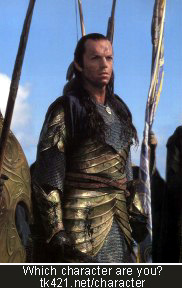Ancient Egyptian Coins Reportedly Found Bearing Name and Image of Joseph

Count me as a cautious skeptic until further verification, but if this story is accurate, this is one of the biggest archaelogical discoveries ever. The fact that the discovery was made by Egyptian archaeologists (who preumably would have no political incentive to provide evidence of ancient Jewish ties to the Middle East--quite to the contrary, actually) bolsters the reliability of the report. According to an article in the Egyptian newspaper Al Ahram, those scientists, while examining the hordes of unsorted artifacts at the Egyptian Museum in Cairo, came across ancient Egyptian coins bearing the name and image of Joseph.
The biblical story of Joseph, found in Genesis, relates how his brothers sold him into slavery in Egypt, where he rose to become the Viceroy, after God gave him the ability to interpret the Pharoah's dreams as a prophecy of seven years of plentiful harvests followed by seven years of famine. He proposes that Pharoah appoint an overseer to collect the surplus harvest in storehouses during the years of plenty, to feed the population during the famine that will follow. Pharoah immediately appoints him as the overseer. During Joseph's rule, his father Israel, his brothers and their families, the Children of Israel, immigrate to Egypt to escape the famine in the land of Canaan. After the death of Israel, Joseph and his brothers, the Bible relates that a new Pharoah "who knew not Joseph" enslaves the Children of Israel, settng the stage for the Exodus led by Moses. (Interestingly, Jewish sages differed on whether the enslaving Pharoah was a new Pharoah who actually did not know Joseph, or the same Pharoah, who in a display of collosal ingratitude, acts as if he did not know Joseph.)
Muslims also revere Joseph as a prophet, and he is discussed in the Koran.
According to the news story Al Ahram, "A thorough examination revealed that the coins bore the year in which they were minted and their value, or effigies of the pharaohs [who ruled] at the time of their minting. Some of the coins are from the time when Joseph lived in Egypt, and bear his name and portrait." The scientist noted that along with Joseph’s image the coins bore his two names: Saba Sabani, the Egyptian name Pharaoh gave him when he became Egypt’s treasurer; and his “original name, Joseph.” Some of the Joseph coins have an image of a cow, possibly alluding to Pharoah's dream of seven fat cows who are devoured by seven lean cows.
In addition to verification that Joseph is a historical figure, not merely a creation of the human authors of Genesis, the discovery lends credence to the historical accuracy of the Biblical narrative of the Exodus of the Children of Israel from Egypt. Many historians, archaeologists and Biblical scholars, and one prominent Conservative Rabbi in Los Angeles, have cast doubt on the historicity of the Biblical narrative of the Exodus, due to the absence of archaelogical evidence. However, as author Nassim Nicholas Taleb has taught us in his book "The Black Swan, the Impact of the Highly Improbable," the absence of proof is never proof of absence.
These coins may also may resolve the question of the identity of the Pharoah of the Exodus. If the coins attributable to Joseph's time identify the Pharoah he served, then either that Pharoah or the next one is the Pharoah who enslaved the Children of Israel after the death of Joseph and his brothers, and the one after that is the Pharoah of the Exodus.
Interestingly enough, the Al Ahram story did not focus on the evidence of the truth of the biblical narrative, perhaps because believing Moslems would never doubt it. Rather, the news article relates that the significance of the find is that archeologists have found scientific evidence countering the claim held by some historians that coins were not used for trade in ancient Egypt, and that this was done through barter instead.
Here are links to the a news report about the discovery in the Jerusalem Post, and at the online service of the Weekly Blitz (an anti-jihadist news service based in Bangladesh, which promotes interfaith harmony). My account above draws from both sources. And here is a link to a MEMRI report that translates excerpts from the Al Ahram news story.
Hat Tip to my friend and Mishna study partner Vic Marmon for alerting me to this story.





0 Comments:
Post a Comment
<< Home